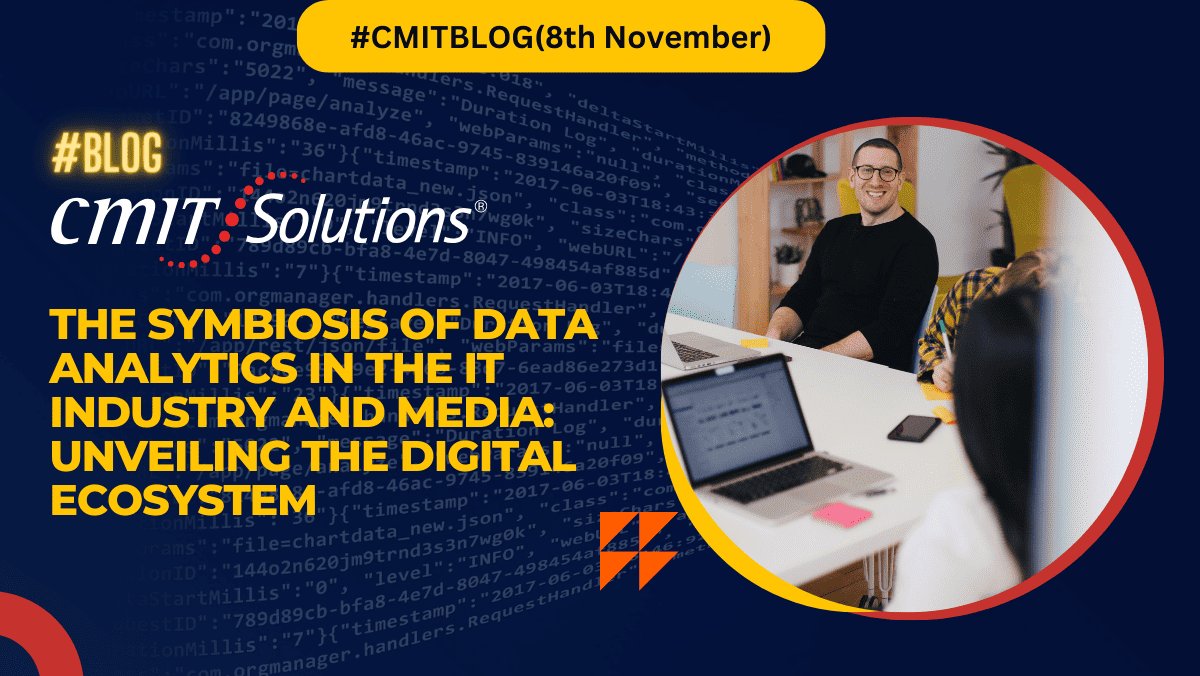Introduction
The IT industry and the media are two dynamic domains with a unique interdependence in the digital age. Data analytics is the glue that binds them, facilitating a seamless exchange of information and content, and driving innovation in both sectors. In this blog post, we will explore the vital role of data analytics in the IT industry and how it is intricately related to media, fostering content creation, enhancing user experiences, and shaping the future of digital ecosystems.
1. Content Creation and Curation
In the media industry, content is king. Data analytics empowers media organizations to understand their audience’s preferences, behaviors, and consumption patterns. This invaluable insight is used to create and curate content that resonates with viewers and readers. From news articles and video streaming to music recommendations, data analytics plays a pivotal role in content personalization and relevance.
2. Audience Engagement and Personalization
In the IT industry, user experiences are enhanced through data analytics. Online platforms, streaming services, and social media networks utilize algorithms that analyze user data to deliver tailored content and recommendations. Personalization is key in keeping audiences engaged and loyal, fostering a mutually beneficial relationship between the IT and media sectors.
3. Predictive Analytics for Content Strategy
Media organizations employ predictive analytics to anticipate what content will perform well in the future. By examining historical data, trends, and audience behavior, they make data-driven decisions about what shows, articles, or music to produce. This not only minimizes the risks associated with content creation but also ensures that resources are allocated efficiently.
4. Ad Targeting and Monetization
Monetization is at the core of the media industry. Data analytics enables media outlets to target ads effectively. By delivering relevant ads to specific demographics, they maximize advertising revenue while enhancing the user experience. This revenue sustains the creation of quality content.
5. Real-Time Decision-Making
Both the IT and media industries thrive on real-time decision-making. Media organizations monitor social media trends, viewer sentiment, and ratings in real-time. Meanwhile, IT professionals employ data analytics to optimize website performance and user interactions. The synergy of real-time data analysis ensures that content delivery and digital services remain responsive to evolving trends.
6. Data-Driven Combat Against Misinformation
In a world rife with misinformation, data analytics comes to the rescue. Media outlets employ data analytics to identify and combat fake news and disinformation, safeguarding their credibility and the trust of their audience. In the IT industry, algorithms are used to detect and reduce the spread of false information on digital platforms.
7. Content Distribution and Optimization
Content distribution is the bridge that connects both industries. Data analytics guides media organizations in optimizing their distribution strategies. They can identify the best times to publish articles, release content, or post on social media. For the IT industry, data analytics is instrumental in delivering content efficiently, reducing latency, and enhancing the end-user experience.
Advantages of the Symbiosis Between Data Analytics in the IT and Media Industries:
1. Enhanced User Experiences: Data analytics enables the delivery of personalized content, improving user satisfaction and engagement in both industries.
2. Improved Content Relevance: Media organizations can create content that caters to the specific preferences and interests of their audience, resulting in higher consumption and retention rates.
3. Efficient Resource Allocation: Predictive analytics helps media organizations allocate resources effectively by producing content that has a higher likelihood of success.
4. Maximized Advertising Revenue: Targeted ad delivery, made possible by data analytics, allows media outlets to maximize advertising revenue while offering users more relevant advertisements.
5. Real-Time Adaptation: Real-time data analysis allows for immediate responses to changing trends, ensuring that content and services remain current and competitive.
6. Combating Misinformation: Data analytics assists media outlets in identifying and countering fake news and misinformation, protecting their credibility and integrity.
Disadvantages and Challenges:
1. Data Privacy Concerns: The collection and analysis of user data raise privacy concerns. Both industries must address these concerns to maintain user trust and comply with regulations like GDPR and CCPA.
2. Potential for Data Breaches: The handling of vast amounts of data makes both the IT and media industries susceptible to data breaches if not properly secured.
3. Ethical Dilemmas: The use of data analytics for ad targeting and content personalization raises ethical questions, especially when user data is used without their consent or knowledge.
4. Misuse of User Data: There is a risk that data analytics could be misused, leading to user profiling, discrimination, and other negative consequences.
5. Overreliance on Algorithms: Relying heavily on algorithms can lead to a lack of diversity and serendipity in content discovery, potentially limiting users’ exposure to new ideas and content.
6. Information Overload: As data analytics produces more and more data-driven insights, there is a risk of overwhelming users with excessive information, making it challenging to discern valuable content from noise.
Conclusion
Data analytics is the driving force behind the symbiotic relationship between the IT and media industries. It empowers content creation, enhances user experiences, and shapes the digital ecosystem. As both sectors continue to evolve, the role of data analytics will become even more significant in ensuring that content remains relevant and that technology serves the needs of a constantly changing media landscape. Together, the IT and media industries exemplify the fusion of technology and content, offering a glimpse into the digital future where data-driven insights propel innovation and meaningful engagement.





